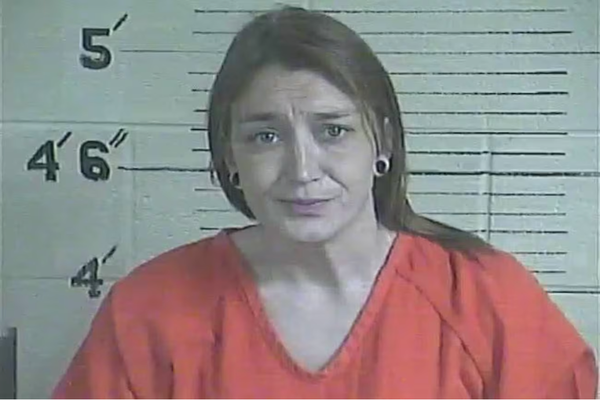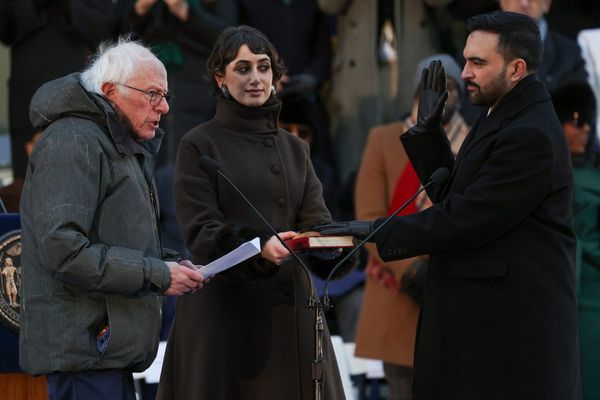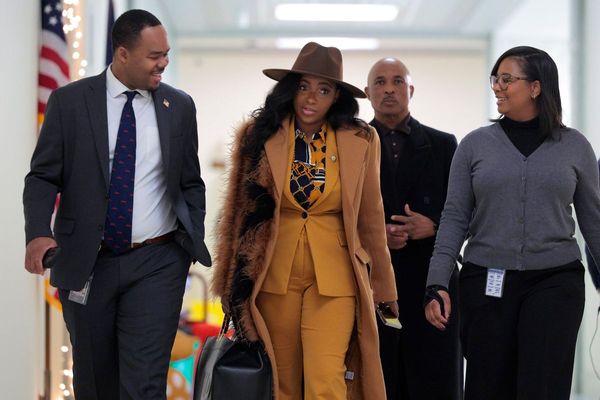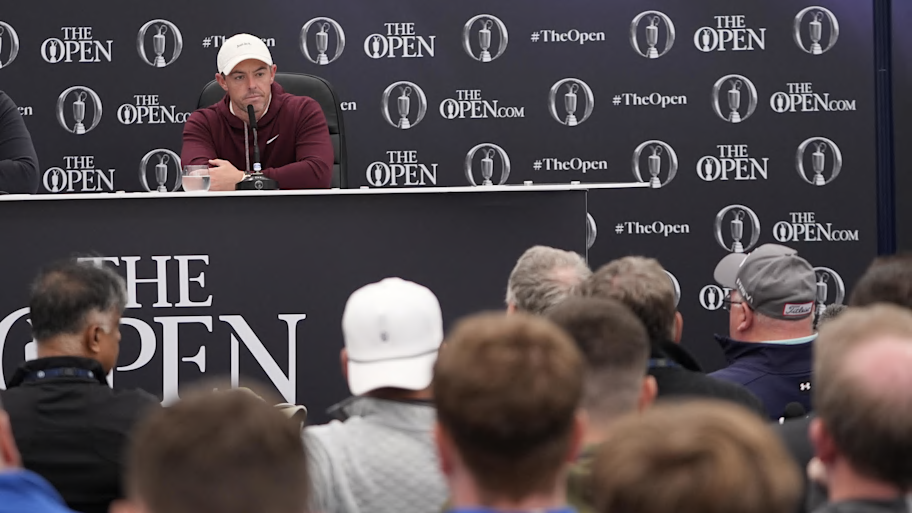
Collin Morikawa could taste victory, until it was washed away in a flash.
The two-time major winner, with only one victory since the 2021 British Open, was leading by three strokes with five holes to play in the Arnold Palmer Invitational at Bay Hill in March. But on the par-5 14th, Morikawa missed the green and made bogey while his playing partner, Russell Henley, hit a 5-iron to 10 feet en route to a birdie. Morikawa's lead now was one. Then on the par-5 16th, Henley chipped in from 54 feet to snatch a one-stroke advantage that he would never relinquish.
Walking off the 18th green, Morikawa was so heated that he didn’t even want to talk to his wife—let alone the media. He signed a few autographs and shipped up to Ponte Vedra Beach for the ensuing Players Championship.
Two days later, in his pre-tournament press conference at TPC Sawgrass, Morikawa was asked why he didn’t answer questions on Sunday at Bay Hill and said he “doesn’t owe anyone anything.”
A decision that initially flew under the radar had turned into a firestorm.
“If Mr. Palmer was there, he’d have grabbed [Morikawa], I’m telling you, it wouldn’t have been pretty, it would’ve been public, too,” six-time Tour winner Rocco Mediate, 62, said on his SiriusXM radio show. “You don’t need to act that way. The Tour does not need that garbage at all … man up, talk about it and be done. [Morikawa] said, ‘I don’t owe anybody anything.’ Actually, he does. The people that are watching. The reporters that bust their a-- to write stories about our sorry a--es.”
Under the microscope, Morikawa unpromptedly doubled down on his stance three days later. And that wouldn’t be his last media squabble during the season. At June’s Rocket Classic, the 28-year-old called out a Golfweek reporter in his Wednesday media availability, feeling that a quote in which Morikawa said he didn’t want to comment on a caddie change during the pro-am and to ask him later in the press center was printed to make Morikawa “sound bad.”
Collin Morikawa had a tense exchange with a reporter during his press conference at the Rocket Classic regarding an article written about his caddie vacancy. pic.twitter.com/yjKPpGpC9w
— Golf Digest (@GolfDigest) June 25, 2025
Perhaps unintentionally, Morikawa had become a primary antagonist against the golf media.
His actions weren’t anything new, though. The longstanding relationship between athletes and the press has always been complex.
Reporting Birdies, Bogeys and …
The two go hand-in-hand. Sports need publicity to garner interest, and journalists provide coverage to help keep their publications afloat. The sportswriting profession began in the late 1800s, primarily covering horse racing and boxing, before becoming a vital part of the newspaper industry early in the 20th century. Golf, meanwhile, made its way into the mainstream in 1913 after 20-year-old amateur Francis Ouimet captured the U.S. Open, putting a golf story on the front page of The New York Times for the first time.
Over a century later, Morikawa wasn’t the only one who expressed frustration with the media this year. There was Shane Lowry, Tyrrell Hatton and even, on a lighter scale, Scottie Scheffler. But the most notable instance besides Morikawa was Rory McIlroy.
A month removed from completing the career Grand Slam at the Masters, the 36-year-old opted not to speak after each round of the PGA Championship, stemming from a leak by SiriusXM that his driver was ruled nonconforming ahead of the tournament. When asked about his silence a month later, McIlroy said, “I feel like I’ve earned the right to do whatever I want to do.”
Arguably, nobody in the sport over the last decade has provided more quotes than McIlroy. And he’s shown a tendency not to mince his words, whether it’s chastising Muirfield Golf Club for barring women, criticizing Donald Trump’s handling of COVID-19 or leading the charge against Saudi Arabia’s “sportswashing” attempts, before and after the inception of LIV Golf. Conversely, he also head-scratchingly dodged reporters after a brutal loss at the 2024 U.S. Open.
This all raises the question: what is the role of the media?
“I’m not a journalist. I don’t know,” McIlroy said when asked that at the Travelers Championship in June. “Report the birdies and bogeys, I guess? And obviously, you have to—the storylines sort of write themselves for the most part. But yeah, I certainly see the need for it and see the need for the platform. Like I’ve never argued that. But I just think nowadays, there’s so many different ways to consume sports and entertainment. It certainly isn’t the only avenue to get your sports news and information.”
That last part of his answer might be the root of the discord.
The Feelings Aren’t Universal
Not everyone has disdain towards the press. In fact, most players don’t. Just ask Ben Griffin.
“It’s important for us as PGA Tour players because it showcases ourselves and our brands and our images,” Griffin told Sports Illustrated at the Travelers, “and how us players choose to use the media is up to us, whether we think it’s advantageous or not. I’m super pro-media. I love social media. I love doing everything.”
Sure, it helps that Griffin, 29, has won twice to become a top-20 golfer in the world, but his sincerity also helped mold him into a much bigger name. He hasn’t shied away from sharing his story about quitting golf and becoming a mortgage loan officer, before giving his career one last shot and earning his way on Tour. Griffin’s been an open book beyond that, too, revealing to reporters he overdosed on creatine mid-round, responding to a subtle stray from Jack Nicklaus, explaining in detail his vision issues that cause him to wear sunglasses when playing and allowing the PGA Tour’s social media team full access from the time he leaves his hotel to teeing off.
Now, at each Tour stop, kids holler at him for autographs. Griffin didn’t completely need the media to boost his popularity.
Max Homa, before he was a multiple-time winner, became one of golf’s most affable social media personalities en route to becoming a fan favorite. Michael Kim and Joel Dahmen have followed a similar trajectory, although Dahmen also used Netflix’s Full Swing to his advantage. Plus, LIV’s Bryson DeChambeau, who, in 2021, boycotted the media after remarks he made about the COVID-19 vaccine, has reshaped his image through golf videos on YouTube.
Yet, there can still be a special feeling when a player walks into a room of scribes eager to ask questions.
“Growing up, it was always a dream to play on the PGA Tour and to have an interview afterwards,” said 28-year-old Englishman Harry Hall, the world No. 49. “It means that you played great. I think the best in the world, they obviously have an interview afterwards if they play poorly. I never looked at it like that. I only have an interview because I played great today. You’re not interviewing me because I just shot an 80, because I’m not one of the best in the world, maybe it would be a little bit different.
“I always grew up looking forward to playing great golf, playing in front of people, and if I had an interview, it was probably because I was in a great mindset and I just played great. So, yeah, I can’t speak for those guys that are having a little bit of trouble, but I don’t understand it.”
Rory McIlroy just have an emotive press conference explaining why he has been skipping media;
— Flushing It (@flushingitgolf) June 14, 2025
“It's more a frustration with you guys.”
This is worth a watch.
pic.twitter.com/vyGRsyOpfq
Someone like McIlroy doesn’t have to be paraded around after a disappointing round. With no penalty for sidestepping questions, he can simply post his thoughts on social media, as he did following the 2024 U.S. Open, and shape his own narrative. But the people expecting him in the press center afterward will likely be sour, losing a key perspective for their stories.
And the situation can escalate, though the solution is just standing at a microphone for two minutes.
“Rory is one of my very favorite people in the sport for a lot of different reasons,” ESPN’s Scott Van Pelt said on SportsCenter following the 2024 U.S. Open. “One, he’s a thinker and he answers things thoughtfully. He’s also a great champion. And today, understandably, a bitter pill, a chance to end this major list drought, and it slips away as it did.
“I think about this, Phil Mickelson, the [2006] U.S. Open, hit off a beer tent on the 72nd hole at Winged Foot to lose with a double and he said afterward, ‘I’m such an idiot.’ How it got away [from McIlroy] on this Sunday and the fact that he walked away without speaking about it will both be remembered.”
Increasing Media Responsibilities
How taxing can media obligations be?
Let’s say, hypothetically, Scheffler is tied for the RBC Heritage lead in the third round through 16 holes. Then, he cards a double bogey on No. 17 and ends up two strokes behind entering Sunday. Afterward, everyone wants to hear what happened from the world No. 1 himself.
So shortly after exiting the 18th green, Scheffler does a television interview with CBS’s Amanda Balionis. After that, it’s another one with Golf Channel’s Todd Lewis for the network’s post-round airing of Golf Central. Then, a third series of questions from SiriusXM’s PGA Tour Radio. Finally, he’ll walk over to the flash area, mostly filled with writers, but open to anyone with a press credential. Nowadays, it’s an eclectic bunch: reporters, PGA Tour media officials, podcasters and social media producers, all with a different agenda to get the quote they need. Not to mention, Scheffler was probably asked—and answered—the same or similar questions repeatedly.
Following nearly 30 minute of talking, Scheffler is free. He can go to the locker room, see his family, sign autographs, eat, whatever.
It’s a drastically different procedure from golf’s previous eras.
“There’s just so much being asked of these guys to do,” Andy North, the 1978 and ‘85 U.S. Open champion who is now an ESPN golf analyst, told SI, “and eventually they’re gonna get mad.”
North, 75, recalls how in his playing days, there were roughly 15 regular golf reporters from major publications, such as The New York Times, Sports Illustrated, Chicago Tribune and Atlanta Journal-Constitution, covering the Tour each week. They dominated the questions and built strong relationships with Tour pros. Outside of the majors, players were seldom called into the media center for a pre-tournament interview session, except for the Nicklaus and Arnold Palmer-esque stars. Most just met the media after a round.
Frankly, that isn’t far off from how things are currently. However, the same can’t be said for the television production.
“On the TV side of it, I think that’s where it’s so much different,” North says.
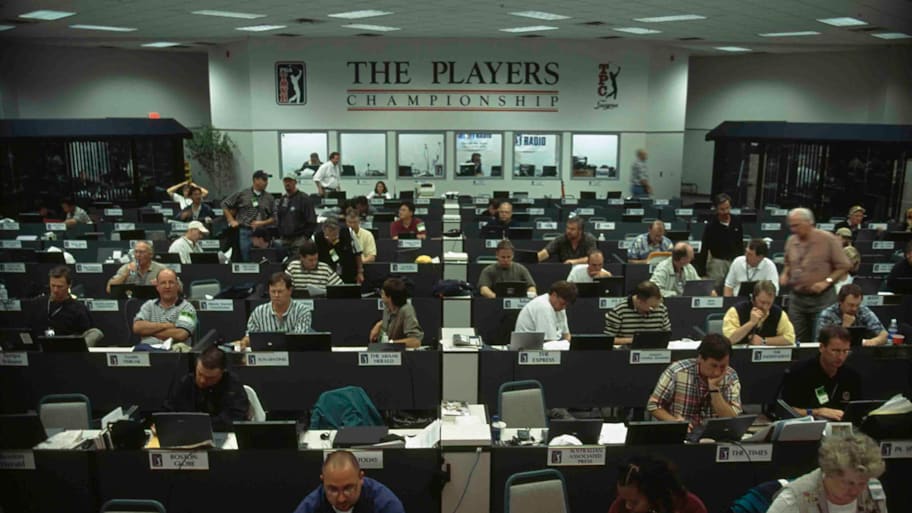
Years ago, most tournaments were only televised for a couple of hours on ABC, CBS or NBC, during the third and fourth rounds, compared to today, where there’s nearly 12 hours of daily coverage across different platforms for each event. Heck, the Masters didn’t even begin broadcasting weekday rounds until 1982.
“Now, there are 500 cameras around with some guy with a microphone every time you turn around,” North says, “so I can understand why the guys get a little bit upset because you’re not doing two interviews a week. The top players are doing 20.”
North added: “I know from our standpoint, doing TV, there are times that you’re the company putting it on and you’re gonna interview a guy after he finishes his round and some guy jumps up there with a camera and jumps in there and [they] shouldn’t be part of this.”
In a bygone era, the continuity with who was asking the questions at every event made players comfortable. That’s not always the case anymore, which can leave some trepidation.
“You knew that if you played well, you would go in and they’d ask you 10 questions and leave,” North says. “And once you got in there, it was the 10 guys—the questions came from the guys who were there all the time, so they were good questions. They were real questions. They weren’t just some of the fluff stuff that we get now.
“And I think on top of all that, there’s no social media, which that’s a huge part of all this.”
Of course, there were still tense moments. Greg Norman stormed out of the interview area podium because of a “choke” question after Bob Tway holed out on the 72nd hole to snatch the 1987 PGA Championship from him (Norman held the 54-hole lead in each major that year, converting only one into a win). Had that happened 30 years later, the clip of him lambasting a reporter would have likely gone viral.
Instead, it was a mere headline in newspapers.
Using Media to Build the Game
The women’s game isn’t free of media turbulence either.
And in a time when women’s sports are booming, there’s a feeling the LPGA hasn’t reached its full potential.
“You had an incredible year by Nelly Korda [in 2024] that maybe wasn’t fully taken advantage of,” NBC golf play-by-play voice Dan Hicks said earlier this year, “and with the Caitlin Clarks and the WNBA and the rest of the world of women’s sports I think exploding, this is the time for women’s golf to make a move, and you’ve got to be creative.”
New LPGA commissioner Craig Kessler, who took over earlier this year, has made increasing the tour’s exposure a priority. To achieve that goal, the circuit parted ways with its chief marketing, communications and brand officer in May and has been working with sports media advisors on its strategy with the press.
However, there’s a consensus that the players could do more to help build storylines.
“I do think the top players need to be better and do media more,” two-time major champion Brittany Lincicome, who retired from full-time competition in 2024, told SI, “especially on our end, because we’re not as big and as cool as the PGA Tour. So anything we can do to kind of help build our brand and help the LPGA stick around for another 75 years, I think it needs to be done, and players probably aren’t going to like that, but it kind of comes with the job.”
When some LPGA stars talk to reporters, they can be tight-lipped at times. For example, in 2022, Korda’s coach, Jamie Mulligan, detailed to Golfweek Korda's harrowing and potentially life-threatening blood clot that sidelined her earlier that season. After the article was published, Korda was asked about it in a press conference and said the comments were blown out of proportion.
Perhaps they were, and Korda absolutely has the right to keep her medical history—and anything else she chooses—private. On the contrary, being open about her diagnosis and then coming back from it to win and return to world No. 1 is a story that would catch people’s attention, which, in turn, could increase eyeballs on the LPGA.
Lexi Thompson has been one of the faces of women’s golf for the last decade despite a complicated relationship with the media. After receiving a four-stroke penalty for improperly replacing her marked ball at the 2017 ANA Inspiration, she declined to comment afterwards, failing to clear the air for both journalists and her fans. Another similar moment followed her five-stroke collapse on the back nine of the 2021 U.S. Women’s Open, where she skipped a television interview.
There was also a tense moment at the 2023 Solheim Cup. Thompson was asked about a shank in Friday’s matches and responded with, “I don’t need to comment on that.” After a confused “excuse me?” from the reporter, Thompson reaffirmed her answer and the media official began to redirect the conversation, but U.S. captain Stacy Lewis got her two cents in by quipping, “That’s a terrible question.”
Confounding answer from Lexi and subsequent reaction from the US side. It was one of the pivotal moments of the entire day and somehow that's off limits? pic.twitter.com/9std3LFlmN
— Tron Carter (@TronCarterNLU) September 23, 2023
The shocking moments on the course, though, can be an opportunity for players to display their humanity.
“It’s just fun for fans to kind of see a different side of a player,” Lincicome, 39, says, “and not just always like, ‘Oh, I had a bad round today, it is what it is. I’m going to go work on my putting.’ That’s so boring.
“I think you could beef it up a little bit with a juicy question, or you just have a little fun with it. I think everyone’s so serious these days.”
From a reporter’s standpoint, it can be easy to harp on the issues that plague the LPGA, such as a zig-zagging schedule, lack of attendance and limited television windows. But that won’t necessarily help bridge the gap between the men’s and women’s game.
“I think if [journalists] can somehow put things like this in a positive perspective, that helps,” World Golf Hall of Famer and longtime LPGA broadcaster Judy Rankin, 80, told SI earlier this year. “We need the journalists—and I don’t mean be dishonest, but find the best things to talk about.”
Talking It Out
Lowry was irritated. His victory hopes at the 2025 Masters were essentially dashed with two late bogeys in the third round. Still, he met the media just a few minutes after his round.
Two questions in, Lowry’s frustrations brewed when someone asked, “Did you find yourself looking back at all at Rory?” A few moments later, the 38-year-old ended his interview session early—with an explanation.
“I’m going to go and—we talk about Collin Morikawa a few weeks ago,” Lowry said, “I think we need time. I think I need a half an hour now to sit there and gather my thoughts. I can’t be coming to talk to you guys straightaway. It shouldn’t be happening. I don’t agree with it.”
The Irishman isn’t alone in that opinion.
“Sometimes, [a good question] doesn’t happen in the flash area,” North says. “And then it gets the guy mad and now somebody asks another question that might be a pretty legitimate question that needs to be answered, and now he’s mad and he’s not gonna answer it the way he should be answering it.
“So, I think it would be nice if a guy had 15 minutes at least to be able to go sit down, have a drink, relax, get your thoughts together and then come out and do it.”
That’s not the only suggestion to ease some of the media apathy. North would like to see some things revert to the old way.
“Is it the player’s responsibility to have to sit down six different times after a round and talk to somebody? I don’t think so,” North says. “I think that’s what the media center is supposed to be. Go and sit down, do your thing and boom, you’re done.”
Public figures will always be subject to criticism, and part of being a journalist is telling the whole truth. That means every story isn’t going to be sunshine and rainbows, whether it’s Mickelson fumbling the U.S. Open on the 72nd hole or Tiger Woods’s infidelity.
“We’ve all had situations where guys have ripped you,” North says. “You gotta be a big boy and grow up, that’s part of the deal.
“It’s nice to have people write nice things about you and it stinks when people write garbage about you. But at least if you’re gonna write garbage about me, at least talk to me.”
When a player is unhappy with a story about them, airing out their grievances respectfully, rather than the silent treatment, could potentially help facilitate a détente.
“If there’s ever an issue that a player has with media, use the media as a way to discuss it and figure out what can be better and be proactive rather than just come up with excuses,” Griffin says. “I just hate seeing players digging themselves holes.”
And not being media-friendly doesn’t just hurt a player’s image; it can also be a blow to their wallets.
“Nowadays, a lot of the top players all have equity in the PGA Tour,” Griffin says, “and if you’re going to sit here and argue that talking to the media is—I mean, if you don’t, if you’re a top player and you aren’t taking the time to talk to the media, how is that helping our product? How is that helping the PGA Tour and your equity that you own as a shareholder?
“The problem is, a lot of players don’t necessarily understand maybe the business side of certain things, but there’s a lot of money that’s going into people’s pockets.”
Maybe too much?
“You know, they brought it on themselves a lot of ways because of the equity partners they’ve got now,” North says, “they want them to be doing a lot of the stuff that [players] don't want to do.”
Of course, just because a player declines an interview or scolds a journalist doesn’t make them evil. Everyone has bad days, which is why, as long as pro sports are around, conflicts between athletes and the people covering them won’t evaporate. No marriage is perfect.
“I think it’s always gonna be adversarial a little bit,” North says, “and I think that goes right back to social media, guys are looking for clicks, now you’ve got influencers that are doing stuff. There’s just so many moving parts.”
At the end of the day, though, players know it’s a privilege to have people clamoring to get inside their heads.
“I’ve always felt that you guys have a job to do, and gals,” Nicklaus said at the Memorial Tournament this year. “And for you to do your job, you need to talk to me. And whether I played well or whether I played poorly, if you still want to talk to me, I’ll talk to you. And I always have.”
This article was originally published on www.si.com as Inside the Increasingly Tense Relationship Between Golfers and the Media.
